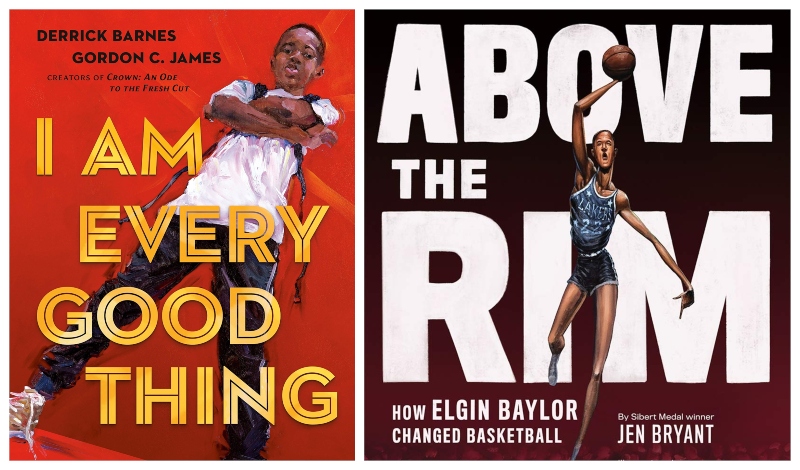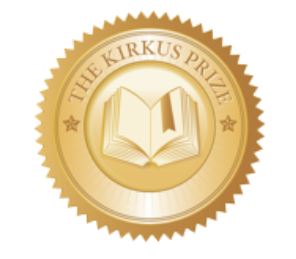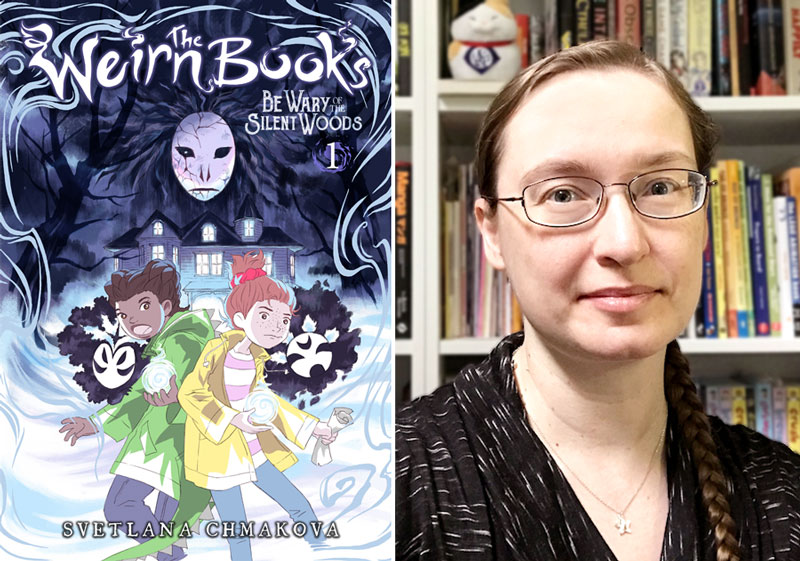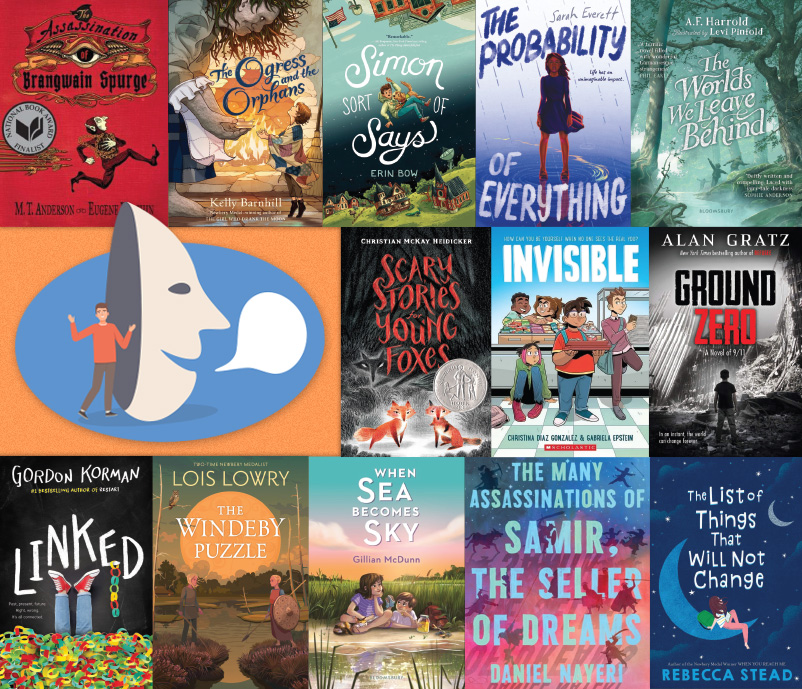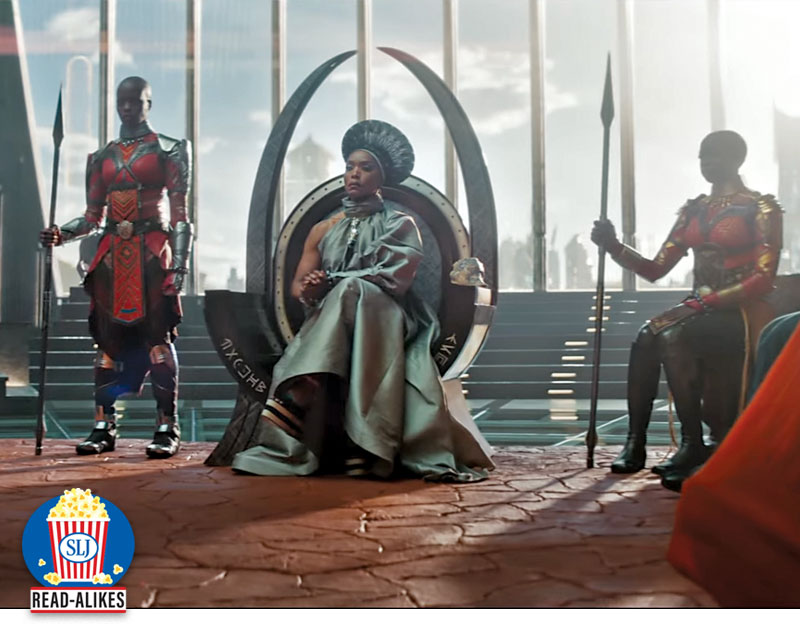Smile
Published by Graphix, an imprint of Scholastic, 2010
ISBN # 978-0545132060
Grades 4 and up
Review
In this hilarious autobiographical tale by author-illustrator Raina Telgemeier, a series of dental disasters provides an appropriate analogy for the trials, tribulations, and triumphs of adolescence. One clumsy fall in the sixth grade damages Raina’s two front teeth, precipitating a chain of orthodontic visits and self-conscious social encounters. While learning to deal with everything from headgear to oral surgery, she must also grapple with romantic crushes, questionable friendships, and well meaning, but clueless adults.
Smile chronicles a coming-of-age story that is both familiar and funny, reminding readers that everyone experiences adolescence awkwardly and that the angst, embarrassment, and excitement of the journey can ultimately lead to wisdom, confidence, and happiness. Don’t make the erroneous conclusion that Telgemeier’s text or bright, appealing artwork is simplistic. Both convey subtleties of wit and expression, compelling readers to turn back to the first page to enjoy the novel all over again.Teaching Invitations
- Using Graphic Novels to Analyze Character. The combination of text and illustration provides various ways for readers to analyze characters in graphic novels. For example, paying close attention to facial expressions helps readers figure out that Raina isn’t too sure whether she likes the girls who claim to be her friends long before she actually confronts them about the way they treat her. Using a document camera or overhead projector, provide students with some pages from Smile with the speech bubbles cleared of text. Have students use Telgemeier’s illustrations to discern what the characters could say that could reveal the meaning behind their expressions and actions.
- Graphic Novels as Memoir. Smile is author Raina Telgemeier’s account of her experiences in middle and high school. Using a graphic novel as a mentor text helps students develop both linguistic and visual ways of telling and reflecting on their own life stories. Start with small chunks, encouraging students to write about and illustrate one meaningful event in their lives. As students become more skilled at writing and illustrating memoir in this format, encourage them to try capturing other meaningful experiences and eventually compile them into a graphic novel memoir of their own. Discuss the difference between merely illustrating a story and using illustrations to deepen the meaning of the story or to help move the story forward. You might want to use the Comic Creator by ReadWriteThink (http://www.readwritethink.org/files/resources/interactives/comic). Most likely, you will find that many students who initially appear to be “reluctant” or “struggling” writers will be motivated by an project like this.
- Peaks and Valleys of Narrative Plot Structure. Many students learn about narrative structure through the familiar “plot triangle” that discusses a story’s exposition, rising action, climax, falling action, and resolution. However, much of the lengthier literature for older children, young adults, and adults do not follow this simple, linear plot structure. Much like real people in real life, Raina experiences a series of highs and lows—narrative peaks and valleys—that together establish her journey through adolescence as a bumpy range to traverse rather than a single mountain to overcome. Distribute chart paper and artistic tools to students, and have them map the rises in action that lead to narrative peaks and the falls in action that lead to narrative valleys of Smile. Encourage them to discuss with each other how “high” a peak should be and how “low” a valley should be in relation to Raina’s experiences across the book.
- Symbols, Analogies, and Deep Literary Analysis. Like prose novels, graphic novels are embedded with literary elements that enrich the quality of the reader’s experience. Although it seems to tell a straightforward story of an adolescent’s social life, Smile uses symbols and analogies to convey deeper messages about what the adolescent journey entails. After discussing the difference between symbols and analogies, have students identify examples of them in the novel and collaborate in small groups to analyze what they could mean. How might Raina’s various dental and orthodontic mishaps relate to what she experiences with friends and family?
ADVERTISEMENT
ADVERTISEMENT
Critical Literacy
- Visual Representations of Characters. Like picture books, graphic novels provide visual representations of a story’s characters. Look closely at how characters are illustrated along several attributes—for example, gender, race, age, profession. Do those representations accurately reflect real life, do they perpetuate stereotypes about people, or do they attempt to push beyond them? Using a character analysis sheet, record the ways in which the illustrations reinforce or challenge stereotypes. Then have students read other graphic novels to compare and contrast how respective characters are portrayed.
- The Great Graphic Novel Debate. Graphic novels continue to be a source of controversy in English language arts classrooms. Critics believe that graphic novels are just glorified comics and detract from real literacy learning. Proponents of including graphic novels in literacy curricula maintain that they contain complex plots, characters, and narrative structures; appeal to both reluctant and advanced readers; and can be useful as scaffolds to other literary genres. Have students research the grounds for each side’s argument. You may want to direct them to the online articles listed in the Further Explorations section below. Then, set up a forum for students to debate the issue. If your class unanimously supports the use of graphic novels in literacy curricula, engage them in a class project—such as a letter to the local newspaper, or a presentation before the school board—where they can authentically and productively express their argument and hope for educational reform.
Further Explorations
Online Resources
Raina Telgemeier’s website
http://goraina.com
ReadWriteThink’s Comic Creator
Comics in the Classroom – A Site for Teachers, Parents, and Librarians
http://comicsintheclassroom.net
Museum of Comic and Cartoon Art
http://www.moccany.org
Eek! Comics in the Classroom!—article in Education World
http://www.education-world.com/a_curr/profdev/profdev105.shtml
Can the X-Men Make You Smarter?—article in Parents’ Choice
http://www.parents-choice.org/article.cfm?art_id=140&the_page=reading_list
Graphic Novels for Multiple Literacies—article in Reading Online
http://www.readingonline.org/newliteracies/lit_index.asp?HREF=/newliteracies/jaal/11-02_column
Books
Graphic Novels about Adolescence
Castellucci, C. (2007). The plain Janes. Ill. by J. Rugg. Minx.
- The first in a series of young adult graphic novels about a secret club of teenage girls named, all named Jane, who stir up their sleepy suburban town with a series of “art attacks.”
Davis, E. (2009). Secret science alliance and the Copycat Crook. New York: Bloomsbury.
- Three middle school braniacs form a secret club to use their love for high-tech, scientific projects to stop the evil Dr. Stringer.
Hicks, F. E. (2008). The war at Ellsmere. San Jose, CA: SLG Publishing.
- A scholarship student at the prestigious Ellsmere boarding school must deal with issues of social class and elitism.
Martin, A. M. (2006). The baby-sitters club series. Ill. by R. Telgemeier. New York: Graphix.
- The popular young adult series has been adapted into graphic novel form and illustrated by Raina Telgemeier.
ADVERTISEMENT
ADVERTISEMENT
White, T. (2010). How I made it to eighteen: A mostly true story. New York: Roaring Brook Press.
- A semi-autobiographical graphic novel account of the author’s battle with drug addiction, bulimia, and a mental disorder.
Yang, G. L. (2006). American born Chinese. New York: First Second.
- The first graphic novel to win the ALA’s Printz Award, its three-pronged plot follows the legend of the Monkey King, the struggles of a lonely Asian American boy who wants desperately to fit in with his white classmates, and the sitcom plot of an All-American teenage boy.
Yolen, J. (2010). Foiled. Ill. by M. Cavallaro. New York: First Second.
- From acclaimed children’s and young adult author Jane Yolen comes this graphic novel about a strong adolescent heroine who uses the sport of fencing to help her survive high school and the fantasy world she finds herself in when she dons her fencing mask.
Notable Graphic Novels
- The first in a strong epic series of graphic novels about three creature cousins, combining elements of fable and legend.
Satrapi, M. (2004). Persepolis: The story of childhood. New York: Pantheon.
- A powerful autobiography about a young girl’s coming-of-age during the Islamic Revolution in Iran.
Spiegelman, A. (1986). Maus I: A survivor’s tale: My father bleeds history. New York: Pantheon.
- In graphic novel format, Spiegelman relays his father’s harrowing experience during the Holocaust.
Filed under: Comics & Graphic Novels
About Grace Enriquez
Grace is an associate professor of language and literacy at Lesley University. A former English Language Arts teacher, reading specialist, and literacy consultant, she teaches and writes about children’s literature, critical literacies, and literacies and embodiment. Grace is co-author of The Reading Turn-Around and co-editor of Literacies, Learning, and the Body.
ADVERTISEMENT
ADVERTISEMENT
SLJ Blog Network
One Star Review, Guess Who? (#211)
Cover Reveal and Q&A: Dusti Bowling’s Latest – The Beat I Drum (Apr 2025)
Kevin McCloskey on ‘Lefty’ | Review and Drawn Response
Notable NON-Newbery Winners: Waiting for Gold?
The Seven Bills That Will Safeguard the Future of School Librarianship
Take Five: Newbery Picks, Part Two
Gayle Forman Visits The Yarn!
ADVERTISEMENT




